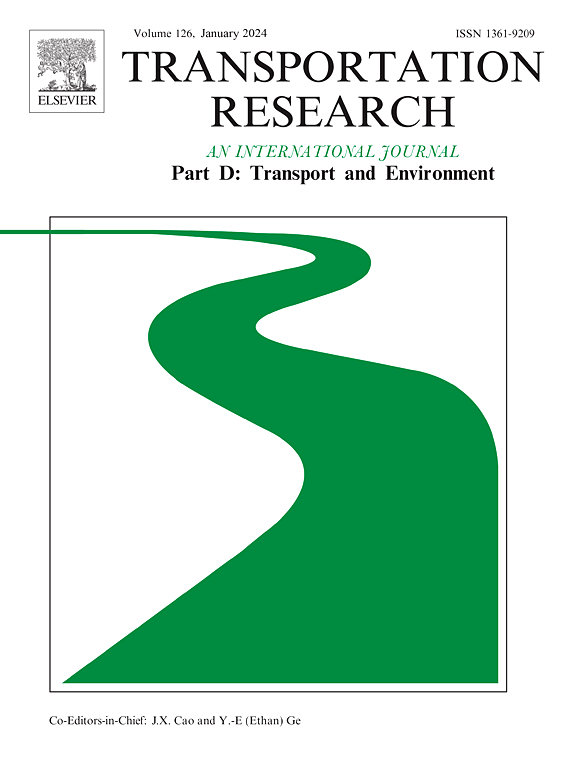从化石燃料到生物燃料:化石燃料港口的循环经济多样化
IF 7.7
1区 工程技术
Q1 ENVIRONMENTAL STUDIES
Transportation Research Part D-transport and Environment
Pub Date : 2025-05-05
DOI:10.1016/j.trd.2025.104796
引用次数: 0
摘要
随着世界加速向可再生能源转型,如果不采取多样化战略,化石燃料港口可能会成为搁浅的资产。本文提出了一个系统动力学模型来研究世界上最大的煤炭港口澳大利亚纽卡斯尔港生物燃料生产的潜力。我们整合了来自港口腹地的生物废物供应数据,并评估了地方和国家层面对生物燃料的同步需求。我们的模型为评估港口系统内多样化的可行性提供了一个动态的、适应性强的框架。我们的研究结果表明,纽卡斯尔港凭借其战略位置、基础设施和内陆地区生物废物和生物质资源的获取,有潜力成为一个循环经济中心。提出了一套政策建议,以指导区域利益相关者和政策制定者实现更可持续的港口生态系统。本文章由计算机程序翻译,如有差异,请以英文原文为准。
From fossil fuels to biofuels: Circular economy diversification for fossil fuel ports
As the world accelerates its renewable energy transition, fossil fuel ports risk becoming stranded assets if diversification strategies are not employed. This paper proposes a system dynamics model to investigate the potential for biofuel production in the Port of Newcastle, Australia, the world’s largest coal port. We integrate data on biowaste supply from the port’s hinterland and evaluate the concurrent demand for biofuels on local and national levels. Our model provides a dynamic and adaptable framework for assessing the feasibility of diversification within a port system. Our findings show that the Port of Newcastle, with its strategic location, infrastructure, and access to regional biowaste and biomass resources in the hinterland, has the potential to become a circular economy hub. A set of policy recommendations to guide regional stakeholders and policymakers towards a more sustainable port ecosystem is proposed.
求助全文
通过发布文献求助,成功后即可免费获取论文全文。
去求助
来源期刊
CiteScore
14.40
自引率
9.20%
发文量
314
审稿时长
39 days
期刊介绍:
Transportation Research Part D: Transport and Environment focuses on original research exploring the environmental impacts of transportation, policy responses to these impacts, and their implications for transportation system design, planning, and management. The journal comprehensively covers the interaction between transportation and the environment, ranging from local effects on specific geographical areas to global implications such as natural resource depletion and atmospheric pollution.
We welcome research papers across all transportation modes, including maritime, air, and land transportation, assessing their environmental impacts broadly. Papers addressing both mobile aspects and transportation infrastructure are considered. The journal prioritizes empirical findings and policy responses of regulatory, planning, technical, or fiscal nature. Articles are policy-driven, accessible, and applicable to readers from diverse disciplines, emphasizing relevance and practicality. We encourage interdisciplinary submissions and welcome contributions from economically developing and advanced countries alike, reflecting our international orientation.

 求助内容:
求助内容: 应助结果提醒方式:
应助结果提醒方式:


